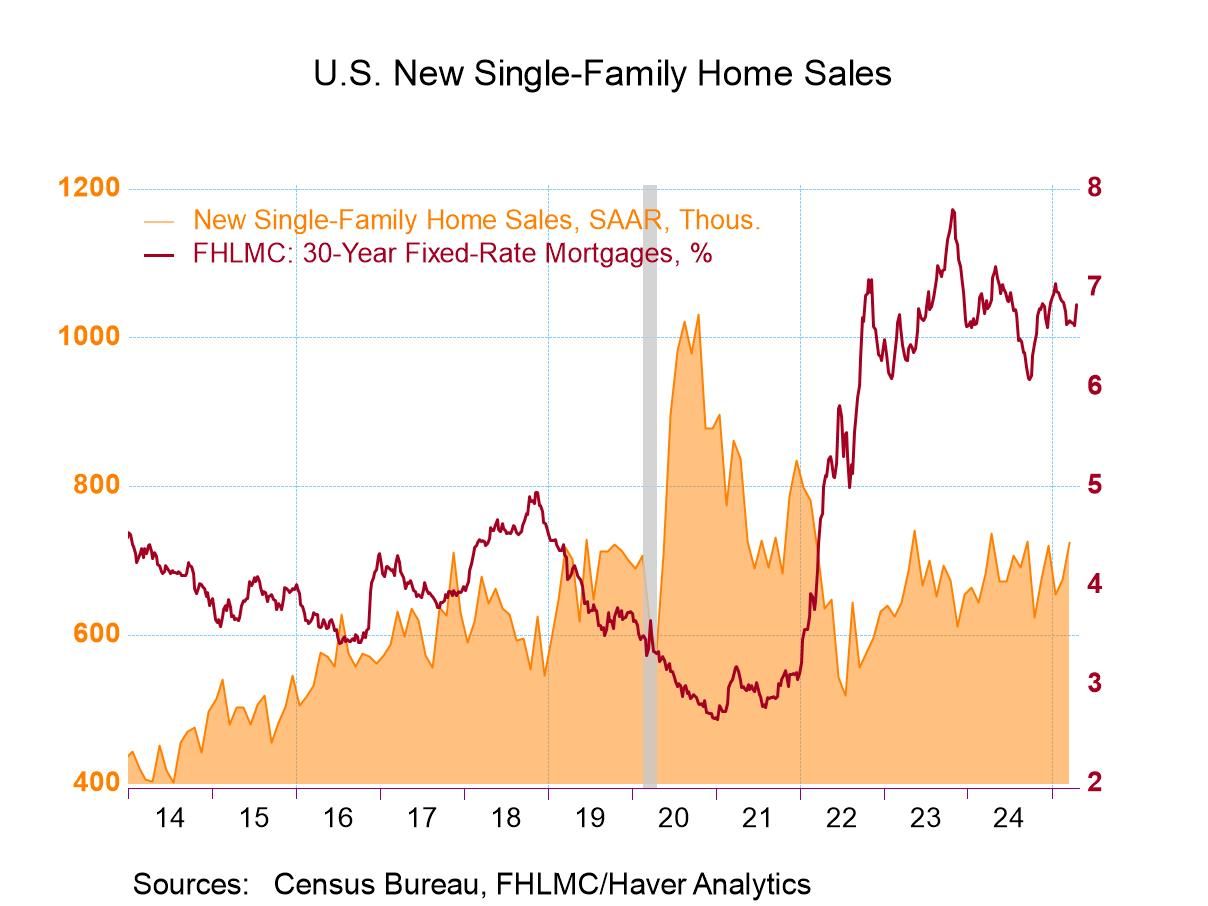U.S. Jobless Claims Ease 2,000 in November 23 Week
Summary
- Initial claims down slightly in last two weeks.
- Continued claims up moderately in mid-November.
- Insured unemployment rate again at 1.3% after 20 months at 1.2%.


Initial claims for unemployment insurance eased by 2,000 in the week ended November 23 to 213,000 seasonally adjusted after 215,000 in the November 16 week; that earlier amount was revised from 213,00 reported a week ago. The week ended November 9 was 219,000. The latest week’s 213,000 is slightly lower than the Action Economics Forecast Survey which had expected the latest week to be 217,000.
The total number of unemployment insurance beneficiaries was 1.907 million in the week ended November 16, up somewhat from 1.898 million in the prior week. That earlier week was revised down 10,000 from the 1.908 million initially reported. This total number of beneficiaries is also known as “continuing claims.”
The insured unemployment rate, that is, the total number of beneficiaries as a percent of covered employment, was 1.3%, the same as the prior week. These two weeks follow 20 continuous months at 1.2%.
Economic conditions vary widely across areas of the country. The Labor Department reports that for the week ended November 9, the insured unemployment rate for New Jersey was 2.3%, in California and Washington State each 1.9%, Alaska 1.8%, Nevada and Rhode Island each 1.6% and Illinois, Massachusetts and New York each 1.5%. The lowest rates were in South Dakota and Georgia each 0.3%, Alabama, Florida, New Hampshire and Virginia each 0.4% and Arkansas, Kentucky, Mississippi, Nebraska, North Dakota and Tennessee each 0.5%. These state rates are not seasonally adjusted.
Data on weekly unemployment claims are from the Department of Labor, not the Bureau of Labor Statistics. They begin in 1967 and are contained in Haver’s WEEKLY database and summarized monthly in USECON. Data for individual states are in REGIONW back to December 1986. The expectations figure is from the Action Economics Forecast Survey in the AS1REPNA database.


Carol Stone, CBE
AuthorMore in Author Profile »Carol Stone, CBE came to Haver Analytics in 2003 following more than 35 years as a financial market economist at major Wall Street financial institutions, most especially Merrill Lynch and Nomura Securities. She has broad experience in analysis and forecasting of flow-of-funds accounts, the federal budget and Federal Reserve operations. At Nomura Securites, among other duties, she developed various indicator forecasting tools and edited a daily global publication produced in London and New York for readers in Tokyo. At Haver Analytics, Carol is a member of the Research Department, aiding database managers with research and documentation efforts, as well as posting commentary on select economic reports. In addition, she conducts Ways-of-the-World, a blog on economic issues for an Episcopal-Church-affiliated website, The Geranium Farm. During her career, Carol served as an officer of the Money Marketeers and the Downtown Economists Club. She has a PhD from NYU's Stern School of Business. She lives in Brooklyn, New York, and has a weekend home on Long Island.





